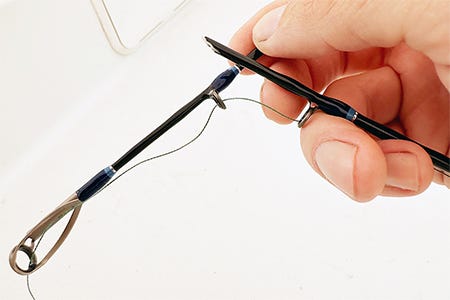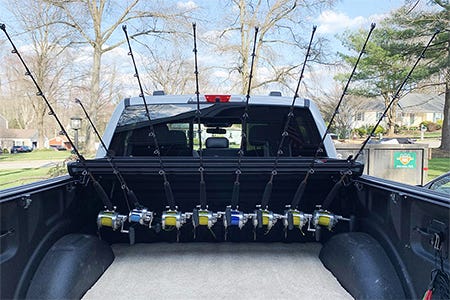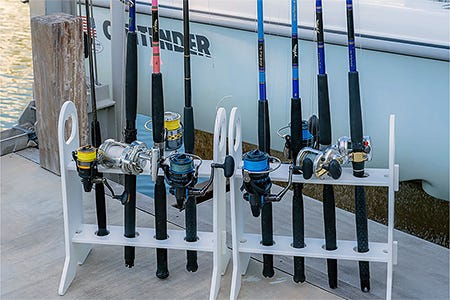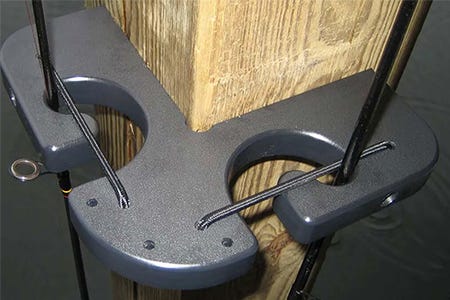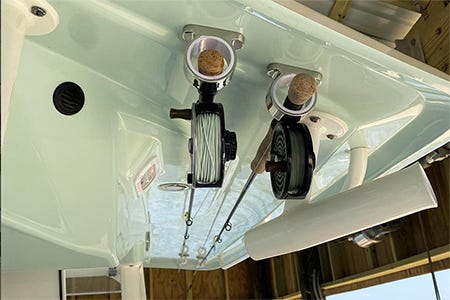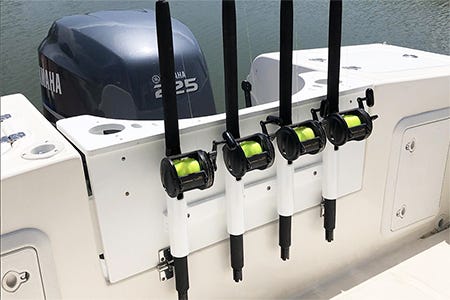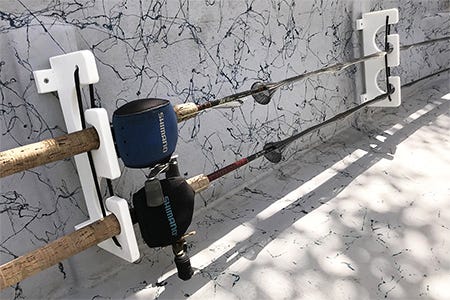

If you have ever broken a nice rod or damaged your favorite reel, then you know the sick-to-your-stomach feeling that ensues afterwards. High-quality rods and reels are an investment in your sport and can increase your enjoyment and effectiveness, but when these items are broken or damaged, warranties often fall short.
Contents
A Guide to Equipment Protection
Like any investment, quality fishing equipment requires protection against damage and loss, and the best “insurance” policy is forethought and care. At every point in a fishing trip, there are hazards waiting to wreak havoc at the first opportunity.
A Little Forethought Eliminates Regret
The first step in protecting your fishing equipment from the various hazards is to consider your specific situation and plan ahead.
The fact is that when you get back from a fishing trip, you are likely to be tired, hot and potentially in a hurry. That’s when mistakes happen, and they can be costly. Planning ahead and having simple, convenient systems and routines in place will ensure that your equipment doesn’t become a victim of haste. Here are a few things you can do to protect your equipment at every stage of your fishing trip.
Protection During Transport
Most fishermen transport fishing equipment from their home to their boat in their car or truck. This part of the trip poses the single biggest threat to your equipment, especially when you are returning from a trip tired and in a hurry. Throwing rods into the back of a pickup is a surefire way to damage equipment. Even when placed carefully in the back of your SUV or car with other equipment, your rods and reels are eventually going to be damaged when things shift on a sharp turn or sudden stop.
The solution is simply a matter of thinking ahead. If you know you are likely to put your rods in the bed of your truck, plan for it, and install pickup truck rod holders that are convenient but keep your equipment secure. If you drive an SUV or car, consider a system that mounts inside or outside the roof of your vehicle.
If you are handy, you might even consider building your own. Short of a storage system that keeps rods safely separated from each other, you should either remove terminal tackle and secure the line at the reel or use rod sleeves to keep your rigs from tangling together, which often results in bent guides. Reel covers also help prevent damage during transport.
For anglers who keep their boats docked or on lifts at home or at a marina, transferring rods and reels from the boat to the dock is another opportunity to damage them — or, worse, drop them overboard. This is another place a freestanding, portable rack — whether a simple DIY job made from PVC or a machined Starboard version for straight or bent butt rods — can be extremely helpful, not only keeping rods safer but also making things easier. Rather than passing rods one-by-one to somebody on the dock, leaning them precariously somewhere, or even laying them on the dock surface, just drop them into the rack.
Protection at Home
Keeping your fishing equipment safe at home involves more than just having a good place to store your rods. If you fish in saltwater, you probably rinse your equipment before putting it away. In your pre-trip preparations, you probably rig your equipment at home. Each of these represent opportunities for damage to your equipment.
Leaning rods against a wall for rinsing or rigging invariably results in them falling over, scratching and damaging reels, and potentially nicking rods. Tying on leaders or replacing terminal tackle at home exposes equipment to hazards like ceiling fans, doorways and falls. A little forethought can reduce or eliminate these risks.
Keeping your fishing equipment safe at home involves more than just having a good place to store your rods.
For rod rinsing, consider installing vertical rod racks on your deck, dock or wherever you normally do your washing down. The same rod racks you might have on your boat can be easily attached to vertical surfaces. Alternatively, can turn any square post into a rod rack with a dock rod holder. And of course many freestanding options, like the convenient Collapsible Rod Rack, can be moved wherever they’re needed. Any of these options allow you to spray your equipment down while keeping it secured.
General Storage
For general storage, consider wall mounted or freestanding racks that keep your equipment organized and out of the way. There are even “grab-and-go” rod racks that mount to the wall but can be quickly removed for transport, rods and all. Ceiling storage works well, too. It’s easy to devise and make your own ceiling rod rack, but if you want something more refined, spring-loaded rod racks work well for overhead mounting, as do Load-N-Lock Rod Holders.
For rigging, a portable, freestanding rack is ideal, or consider installing a tackle station that stores your tackle and holds your rods in the same unit. These can simplify your pre-trip preparations and minimize the risk of damage by keeping everything you need in one place. If you are a serious fisherman and do a lot of preparation at home, you might even consider designing your own rigging station and rod storage unit through Boat Outfitter’s custom option.
Protection on the Boat
If vehicles represent the greatest risk to your equipment, your boat is likely a close second. If your boat doesn’t have built-in rod storage components, your equipment is more likely to be broken or damaged. Even if your boat does have good rod storage options, “boat rash” is an ever-present hazard. Regardless of your boat’s current design, there are a few simple things you can do to ensure your equipment is properly protected.
Vertical Rod Holders:
Vertical rod and equipment holders are popular on boats because they take up the least amount of space and are incredibly convenient. These can be installed on consoles, bulkheads, transoms or coolers and keep rods from rattling around in the cockpit of your boat. Keep in mind, however, that while these are great for running to your spot, they are the number one cause of rod breakage once you are fishing.
Countless rods have been accidentally shortened when a wayward cast crosses paths with a rod in a vertical holder. Use your vertical holders wisely, and don’t store rods in them while you are fishing!
Horizontal Rod Storage:
While less convenient than vertical racks, gunwale-mounted storage racks and boxes keep your rod tips safe and your reels out of the way. If your boat doesn’t have these currently, they are relatively easy to mount and can dramatically increase your equipment carrying capacity and organization.
Like vertical rod holders, however, there are some risks — and solutions — to consider. Sliding rods in and out of these racks can scratch or damage your rods, compromising their strength over time. Using braided rod sleeves provides a buffer and protects your rod eyelets from being bent or damaged.
Horizontal Rack Considerations:
If you are storing your rods in a horizontal rack, either under the gunwale or along the side of your boat, keep in mind that, in many cases, your reels are likely to bounce against the hard surface of the boat that they are up against. This can damage bails or scuff reels over time, and even cause cosmetic damage to your boat. Installing a piece of foam decking to cushion your reels will eliminate this risk and can also dress up your boat.
Protect Your Investments
Your fishing equipment is an investment that you rely on, and high-quality equipment isn’t cheap. Keeping your equipment in good shape not only increases your enjoyment, it ensures that it operates properly when you need it most. Planning ahead and installing simple, effective, and convenient systems can make protecting your equipment from damage easy, even when you are tired after a long trip. As you go through your next pre- and post-trip routines, consider ways to make future trips even better.

